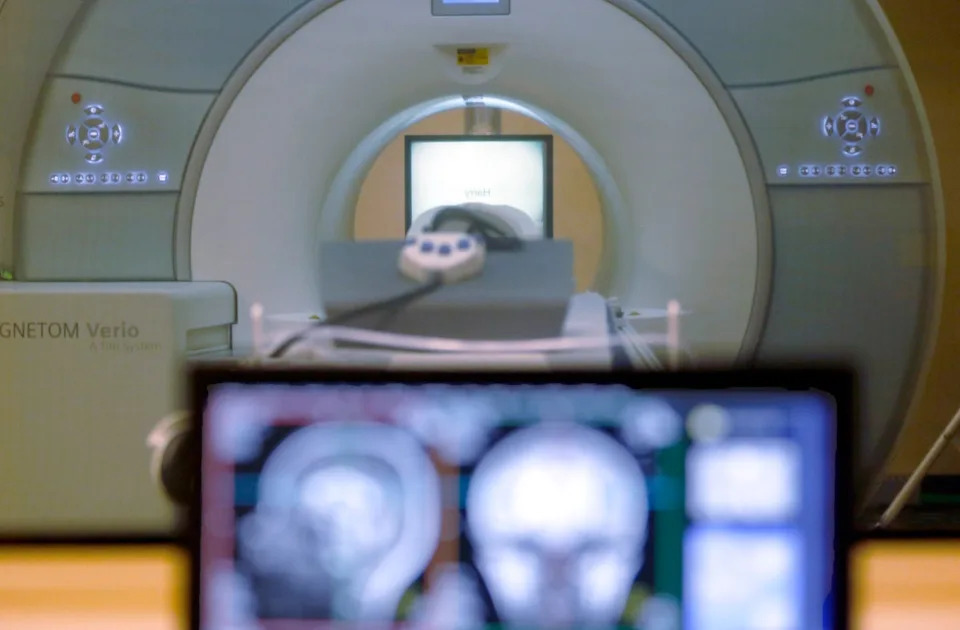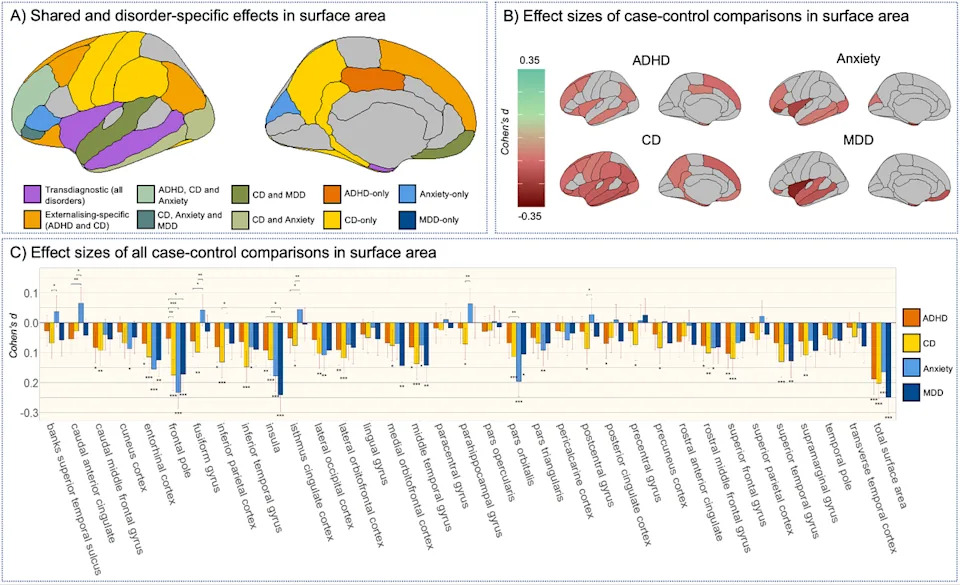Young people diagnosed with four common psychiatric disorders, including anxiety, depression and ADHD and conduct disorder, share “strikingly similar” structural changes in the brain, according to a new study.
Brains with any of the four conditions tended to have a reduced surface area in regions responsible for processing emotions, responding to threats and maintaining awareness of bodily states.
The University of Bath conducted the largest international study of its kind and analysed brain scans from around 9,000 children and young people, with approximately half of them diagnosed with a mental health condition.
The findings, published in the Biological Psychiatry journal, are significant because they suggest that mental health disorders should not be studied in isolation as they traditionally are, because analysing them simultaneously opens doors to treatment strategies for multiple conditions.
Dr Sophie Townend, lead researcher of the study, said: “Our research shows that, even if they may look very different, the four most common mental health conditions of childhood and adolescence are very similar at the brain level. This suggests that we may be able to develop treatment or prevention strategies that are helpful for young people with a range of common disorders.”

The findings are significant because they suggest that mental health disorders should not be studied in isolation as they traditionally are (AP)
The research team also found that girls and boys are more alike than previously thought, as both experienced similar changes in brain structure with the same mental health disorders. This was surprising given that previous, albeit much smaller, studies had suggested that girls and boys with the same disorder might show different changes in brain structure.
This is despite considerable evidence showing ADHD and conduct disorder is more common in boys, and depression and anxiety is more common in adolescent girls.
Professor Stephane De Brito from the University of Birmingham, who also contributed to the study, said: “At this point in time, while we can say that the brain is involved in all four of the disorders that we studied, it seems unlikely that these changes in brain structure can explain why there are important sex differences in the prevalence of these conditions.
“This means we might have to look at other factors such as the child’s early environment or experiences, which might interact with changes in the structure or function of the brain to increase risk for developing disorders.”
The study brought together 68 international research groups across five continents from the global alliance group of scientists at the ENIGMA Consortium, which specialises in understanding brain structure and genetic studies.

Brains with either of the four conditions tended to have a reduce surface area in regions responsible for processing emotions, responding to threats and maintaining awareness of bodily states (University of Bath)
Generalised anxiety disorder is defined as feelings of stress or worry that affect your daily life and are difficult to control. The NHS says symptoms include difficulty sleeping, feeling restless, irritable or finding it difficult to concentrate and getting tired easily, among others.
Depression is defined as sadness, hopelessness and losing interest in things you used to enjoy. The NHS says symptoms include continuous sadness, feeling hopeless and low self-esteem. These symptoms may persist for weeks or months and become bad enough to interfere with your work, social life and family life.
ADHD is defined as a person’s ability to pay attention to things, having high energy levels (being hyperactive) and their ability to control their impulses. Symptoms of ADHD, according to the NHS, usually start before the age of 12 and include being easily distracted, finding it hard to listen or follow instructions and forgetting everyday tasks.
Conduct disorder is defined as a repetitive and persistent pattern of behaviour in which societal norms, rules or laws are violated. Symptoms can include aggression towards people or animals, destruction of property, deceitfulness and theft.
